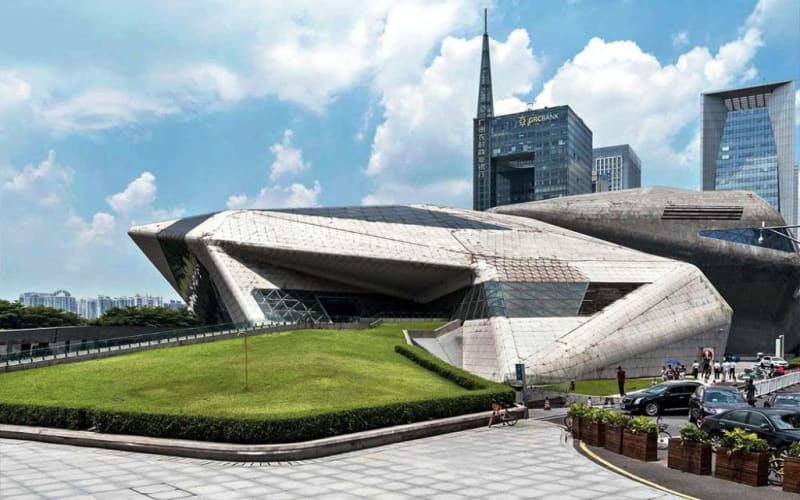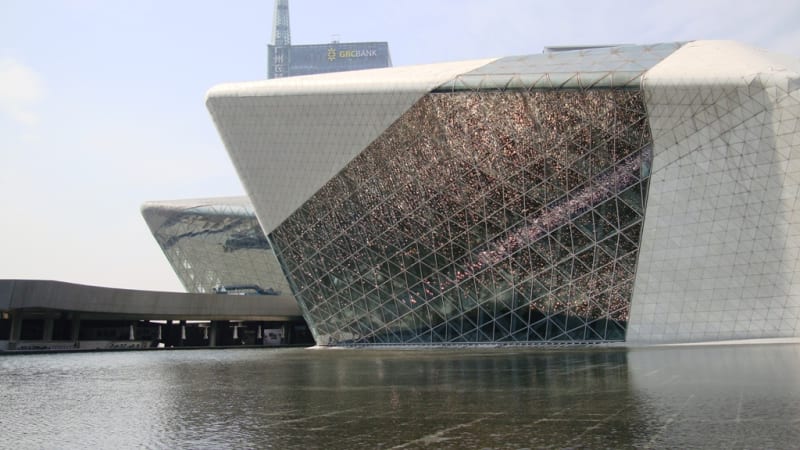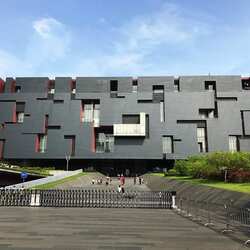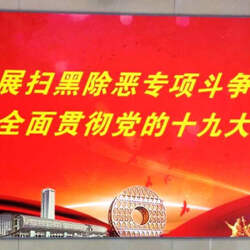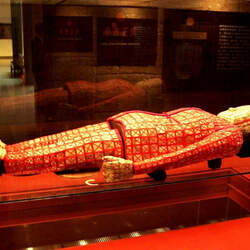Guangzhou Opera House
Guangzhou Opera House, designed by Zaha Hadid, opened on May 9, 2010. The acoustics are very good here, so even complex productions are not difficult to perform, they delight the audience with their musicality. World stars often perform on the stage of the theater. The repertoire includes operas, ballets, musicals and even concerts. The theater is especially popular with fans of photography, and indeed, photos against the background of an unusual building turn out to be incredibly interesting.

Construction history
The Guangzhou Opera House was planned by the government in 2002, and a competition was held to select the best architectural solution. The winner was Zaha Hadid, a British artist who is already known for her global projects. When creating the project, the architect was inspired by marine motifs. The shape of the Guangzhou Opera House can resemble pebbles that have been washed by the sea for a long time. The construction of the building began in 2005 and lasted for 5 years, about 200 million dollars were allocated for its creation. The opera "Turandot" is the first production of the theater. And although not all locals clearly accepted it, it laid a successful foundation for work.
It is believed that the unusual shape of the Guangzhou Opera House building is a symbol of Guangzhou itself. People with fantasy associate rounded edges with the winding bed of the Pearl River. For locals, the river is the main waterway, which explains the reverence with which every resident of the city treats it.
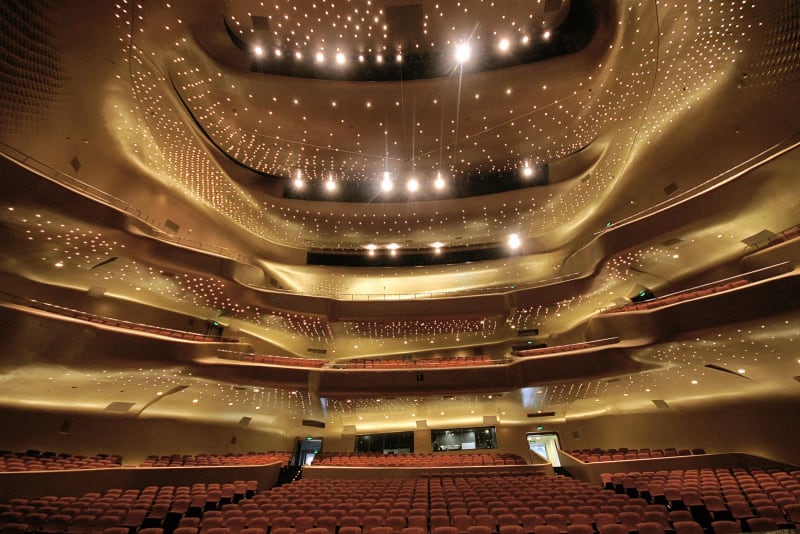
Internal filling
From the outside, the Guangzhou Opera House surprises everyone, but once inside, the surprise does not go away. The huge hall, which can accommodate 1800 spectators, is distinguished not only by its size, but also by its beauty. The multi-tiered ceiling is covered with lots of bright LED lights. The lighting fixtures are positioned in such a way that when turned on, the ceiling seems to turn into a starry sky. Such lighting does not dazzle, but adds volume to the stage and makes each production more interesting. Tourists who are used to visiting European theaters, where a large crystal chandelier hangs in the center of the hall, are shocked by this approach to lighting. The latest technologies used in the construction of the Guangzhou Opera House Hall make it possible to carry out even very technically complex productions. In addition to classical and modern operas, the theater regularly hosts concerts.
Currently, the theater does not organize full-fledged excursions, but anyone can purchase a ticket in advance and attend any production. Those who do not want to spend the evening at the opera or ballet can enter the ticket office area and explore the lobby.
The capital of Guangdong Province is famous for modern buildings, which some residents and tourists associate with spaceships and alien structures. The futurist-style Guangzhou Opera House can deservedly take a place on the list of places to visit when traveling to China.
